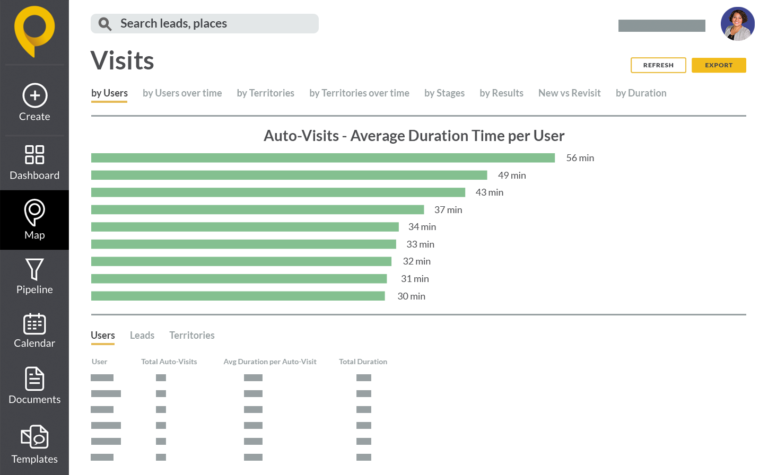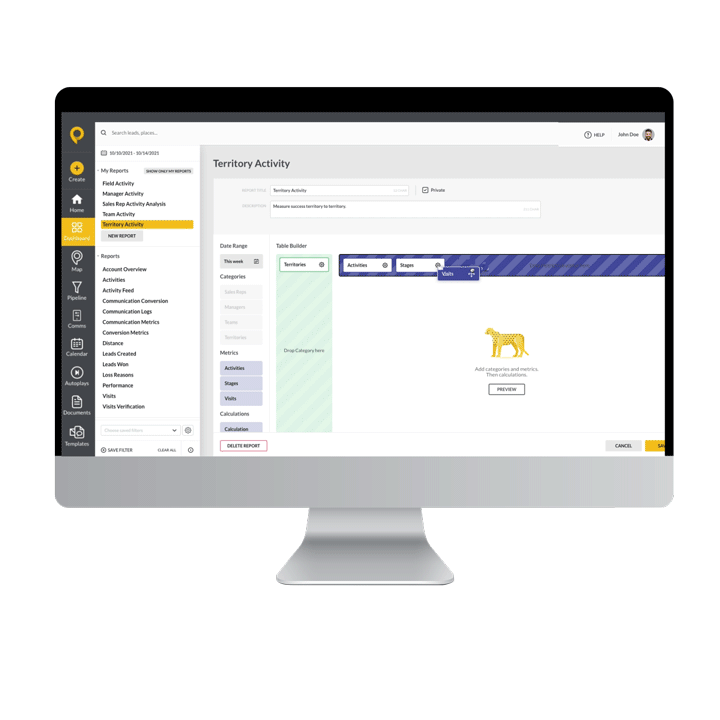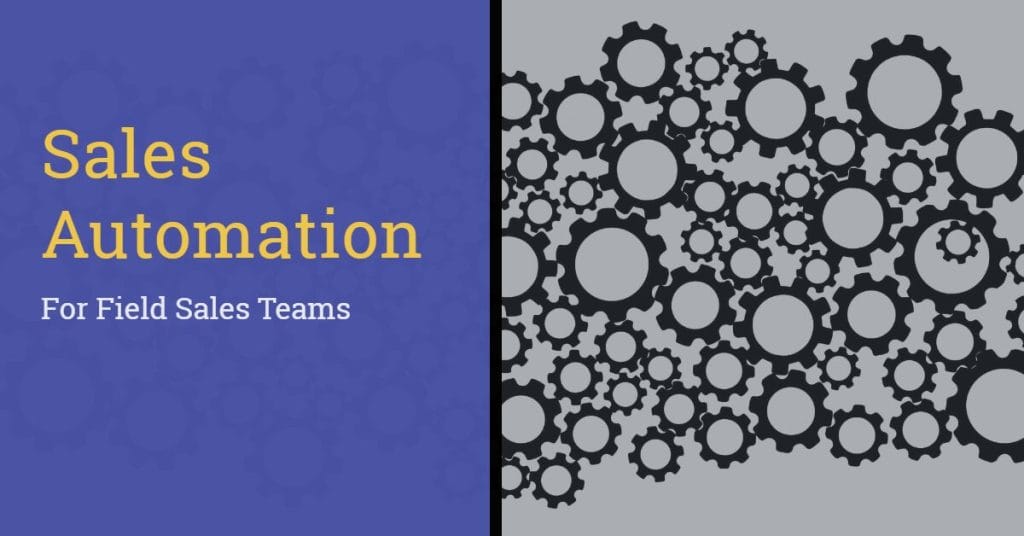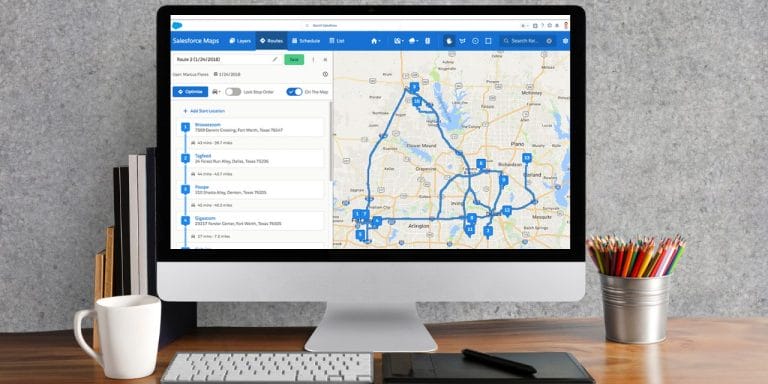We’re just going to say it: sales automation is a big deal.
Once you invest in this kind of tool, you’ll be able to immediately add new leads to your CRM so that you can spend more of your time selling, automatically follow up with prospects so that none of them fall through the cracks, and a whole lot more.
But what is sales automation? And how can you actually use it to supercharge your sales engine? That’s what we’re going to talk about in this article. Let’s dive in!
What is sales automation?
Sales automation happens when software, artificial intelligence (AI), and other digital tools are used to eliminate the mind-numbing, time-consuming tasks that sales reps are asked to complete on a regular basis.
If you’re still manually entering prospect details into a CRM, for example, or typing up invoices and payment reminders to send to customers, you could benefit from sales automation. And if you aren’t still doing these things? Well, you’re probably already using sales automation to some degree.
Keep reading to learn how to automate your sales processes even more. That way you can turbocharge your productivity, close more deals, and maximize success.
A third of all sales tasks can be automated
According to McKinsey, a well-respected global management consulting firm, one third of sales tasks can be automated. Digging deeper into the research, we find:
- 29% of sales strategy and planning tasks can be automated.
- 43% of configuration, pricing, and quotation tasks can be automated.
- 50% of order management tasks can be automated.
- 40% of post-sale activities can be automated.
Despite this amazing potential, McKinsey’s research suggests that a mere 25% of companies automate one sales process or more. That’s it.
If you want to close more deals and propel your company forward, you must invest in sales process automation. Let’s talk about how to do that…
How does sales automation work?
The first thing you need to realize about sales automation is that it isn’t a silver bullet. You can’t set up your systems, sit back with a bucket of popcorn, and watch the sales roll in. Most deals will still require a human touch.
What automation can do is minimize the simple, repetitive tasks you have to complete on a daily basis. With these tasks out of the way, you’ll be able to focus on more important things, like building deep relationships with prospects.
Here are a few of the tasks your sales automation system can handle:
- Forecasting
- Lead Identification
- Lead Qualification
- Lead Assignment
- Quota Measurement
- Order Management
- Follow-Up Communication
- Sales Reporting
- Pipeline Management
You’ll need to decide how many of these tasks to automate. Our suggestion? Look for tasks that bog you down and keep you from revenue-generating activities. Then find tools to help you eliminate these tasks from your to-do list.
What are the main categories of sales automation?
As we alluded to above, sales automation comes in a variety of forms.
Certain tools will help reps automate specific tasks, like qualifying leads and sending follow-up emails. Others are designed to automate entire sales processes.
Here are six ways that sales automation can supercharge your workflow:
Automated data entry
The average sales rep spends 34% of their time selling. The rest of their day is dedicated to non-revenue-generating tasks like data entry.
This is less than ideal, which is why smart sales teams look to automate data entry tasks as often as possible. What does this look like in real world scenarios?
Some platforms automatically capture customer data and enter it into CRM software. Others auto-fill customer details (think name, address, product info, etc.) into proposal software. And others offer click-to-call functionality so that reps don’t have to fumble around with phone numbers when making sales calls.
Data entry doesn’t just waste time. It robs reps of motivation. They want to sell, not type numbers into their computers. So, automating data entry tasks is huge.
Automated lead management
Think about all the work that goes into managing a single lead…
Managers have to assign leads to the right reps. Reps have to analyze the lead’s behavior to assess their potential for a sale. Then, reps have to reach out to the lead, strike up a conversation, and pitch their company’s products in an enticing way.
It’s a lot. Fortunately, certain sales automation systems can handle many of these tasks for you—and they’ll do it much faster than you can, too.
Automated communications
We should reiterate: sales process automation can’t do everything for your sales team. Your department will still need to employ humans to talk to prospects.
That said, sales automation can do a lot, including outreach.
You can, for example, set up automated email sequences, which can be used for prospecting purposes or to move current prospects into the next stage of the buyer’s journey. You can automate your voicemails as well.
Eventually, you’ll need to email your prospect back personally. Or actually talk to them on the phone. (Voicemails will only get you so far.) But sales automation can handle a lot of the grunt work that comes before these things.
Automated activity logging
Have you ever heard a sales rep say, “I can’t wait to log my activities for the day!”?
The answer is “no” because that sentence has never been uttered by a sales rep. Ever. The reality is, activity logging is the bane of most rep’s existence.
Fortunately, a sales automation system can eliminate this tedious task from a rep’s workflow. Once you have the right platform in place, every email you send and call you make will automatically get logged in your company’s CRM.
Automated record keeping
Just about every sales team in the world invests in CRM software. Why? Because it’s a super useful tool that empowers sales reps and helps them close more deals.
But here’s the thing: CRM software only works if you use it properly.
To do that, reps have to update CRM records, which is a form of data entry, and, therefore reviled by every member of the sales community.
Sales automation saves the day again. Once you set up your sales automation system, you’ll be able to automatically generate CRM records in a variety of situations, such as when a lead fills out a form on your company’s website.
Automated reporting
Finally, sales automation can supercharge the reporting process, too.
It takes time to generate sales reports—mostly because they require reps to manually enter data into spreadsheets and/or apps. As we talked about before, automation will minimize the data entry tasks that reps are forced to complete.
This means that reports can be generated in a matter of seconds.
Depending on the automation tool you use, you may be able to create reporting templates as well. This will allow you to generate consistent reports that contain specific bits of information—without additional effort.
What are the benefits of automation for field sales teams?
At this point, the benefits of sales automation should be pretty clear. But let’s run through them—just to make sure we’re on the same page.
Once you invest in a sales automation system, you’ll be able to:
Improve rep productivity
Surprise! Sales reps are way more productive when they don’t waste time on mundane tasks like data entry. To get more done, invest in sales automation and let the robots handle these activities, while you focus on closing deals.
Accelerate the sales process
You can streamline almost every aspect of your sales process through the power of sales automation. Qualify leads, follow-up with prospects, report on quota attainment, and forecast future results with less effort. The result? A faster, more accurate sales process that will help you close deals in less time.
Stop leads falling through the cracks
According to Brevet, 80% of sales require 5+ follow-ups. Unfortunately, 44% of sales reps give up after one follow up. Here’s the truth: following up is essential to success in sales, but it’s not always easy, which is why so many leads fall through the cracks.
With a sales automation system in place, you’ll be able to automatically follow-up with leads, ensuring none are forgotten, and boosting your chances to make a sale.
Improve data consistency and forecasting
Modern sales runs on data. To close deals at a consistent clip, you need to make sure that your company’s data is as accurate as possible. This is easy to do with sales automation.
Think about it, data entry tasks are ripe for human error. It’s pretty easy for a sales rep to mistype something—especially after a long day in the field. Unfortunately, small errors like this can lead to broken relationships and lost sales.
Accurate data is needed for forecasting, too. You can’t predict future results with any kind of precision if your data is off. Trying to would be a recipe for disaster.
Shorten the sales cycle
Sales automation can help you qualify leads, which has two potential benefits: a higher close rate and a shorter sales cycle. We’ll talk about close rates next.
First, the longer your sales cycle is, the more money it costs your company to close deals. There’s also the chance that a lead will become disinterested or that a competitor will swoop in and steal a sale away from you.
By shortening the sales cycle, you can help prevent these things.
Fortunately, shorter sales cycles are within reach if you use sales process automation tools because they can help you target high-quality leads, who are most likely to buy from you right now.
Increase close rates
As mentioned above, sales automation can help you qualify leads, which, in turn, will boost your close rate. It makes sense: you’ll close more deals when you talk to people who actually want and need the products/services you sell.
Sales automation systems can also help facilitate prospect communication, which we talked about as well. A stream of consistent texts, emails, and calls can be the difference between a won deal and a lost opportunity.
The point is, once you add automation to your workflow, your close rate will rise.
Enhance customer relationships
Lastly, sales automation will help you build better relationships with your audience.
You’ll talk to the right people. You’ll contact prospects more consistently. And your data regarding each opportunity will be more accurate.
All of these things will naturally result in better relationships, which will enable you to close more deals today and tomorrow, as you earn your customers’ loyalty.
What field sales processes can be automated?
You may think that sales process automation sounds amazing, but is better suited to inside sales teams. Not true. Automation can be used by field sellers as well.
Here are seven field sales processes you can automate:
Administrative tasks
Field sellers, like all sales reps, are often bogged down by administrative tasks. Unfortunately, these tasks prevent field sellers from reaching their full potential.
A proper sales automation system will automatically log prospect interactions in real time, pass the notes a field seller takes to their CRM, send sales messages to leads at predetermined times, and otherwise eliminate most busy work.

Image: SPOTIO helps field sales rep automate admin tasks and sales activities.
Without having to complete these tasks, field reps will be able to focus on the job they were hired to do: talk to potential customers and close deals.
Sales prospecting
Who should you spend time on as a field sales rep? The answer is the people/businesses that are most likely to buy products/services from you.
How do you tell who these people/businesses are? You use sales automation to help find and qualify leads. That way you don’t waste time on poor-fit prospects.
Tools like SPOTIO, for example, will help you identify the right leads by pinpointing real prospects on a digital map and allowing you to easily sort through them using 200+ filters. This will tell you exactly who to contact.
Sales activities
Sales automation can streamline many of your daily sales activities, too.
You could, for example, use SPOTIO’s Multichannel Communication solution to build automated text and email campaigns. This will allow you to communicate and build relationships with top prospects on autopilot.
The best part is, every text or email you send will automatically get logged in your CRM of choice, eliminating tedious data entry tasks for field sales reps.
Following Up
Most prospects do not buy after their first encounter with a sales rep. To succeed in field sales, you need to implement a solid follow-up strategy.

SPOTIO’s Autoplays is the perfect sales automation tool for this purpose. Use it to design entire activity sequences that include automated texts and emails, as well as call and visit reminders. That way nothing slips through the cracks.
Scheduling meetings
How much time do you waste scheduling meetings? If you’re in field sales, the answer is probably a lot. Sales automation can give you that time back.
The right tool will allow prospects to view your calendar, assess when you’re available, and choose a time that works best for them—all without having to engage with you in any way. Once they book a time slot, the calendar will automatically update itself so that you’re never double booked.
Rep tracking
Field sales managers are always wondering, “what are my reps doing in the field?” Once they have the answer to this question, they can build better sales strategies.
SPOTIO’s Rep Tracking will allow you to track your reps in real time, view their travel paths for the day, see which sales activities they’ve performed, and more. That way you’ll know if they’re using their time wisely, planning efficient routes between prospects, and if low performance is a result of poor effort or bad training.
(Note: This feature can be turned off if your reps feel like it violates their privacy.)
Sales reporting and forecasting
Finally, sales automation can be used to both report on past sales and forecast future ones. Both tasks are essential, but time-consuming.
When it comes to reporting, sales reps and managers can spend hours creating reports every week. That’s a lot of time that could be spent on other tasks.
Sales process automation can help you generate reports in seconds and then automatically send them to interested parties.

Take SPOTIO’s My Reports, for example, which can be used to create customized reports—using only the metrics and KPIs that matter most to you. With My Reports, the data you need is always within easy reach.
Forecasting is another task that sales automation can streamline. These kinds of tools will assess your field team’s sales performance, adjust for seasonal trends, and create highly accurate forecasts you can use to plan the future.
Automate your sales process with SPOTIO
Sales automation is a critical component of modern sales. Once you add it to your workflow, you’ll become more productive, develop better relationships with your prospects and customers, close more deals, and so much more.
The trick is finding the right sales automation system for your needs. If you’re in field sales, we recommend SPOTIO.
SPOTIO was specifically designed for field sales teams, which means you won’t have to just “get by” with another tool. Every SPOTIO feature was made to assist field sellers and help them close deals at a consistent clip.
Sign up for a free demo today to see SPOTIO in action and decide if it’s the right sales automation tool for your field sales team.




